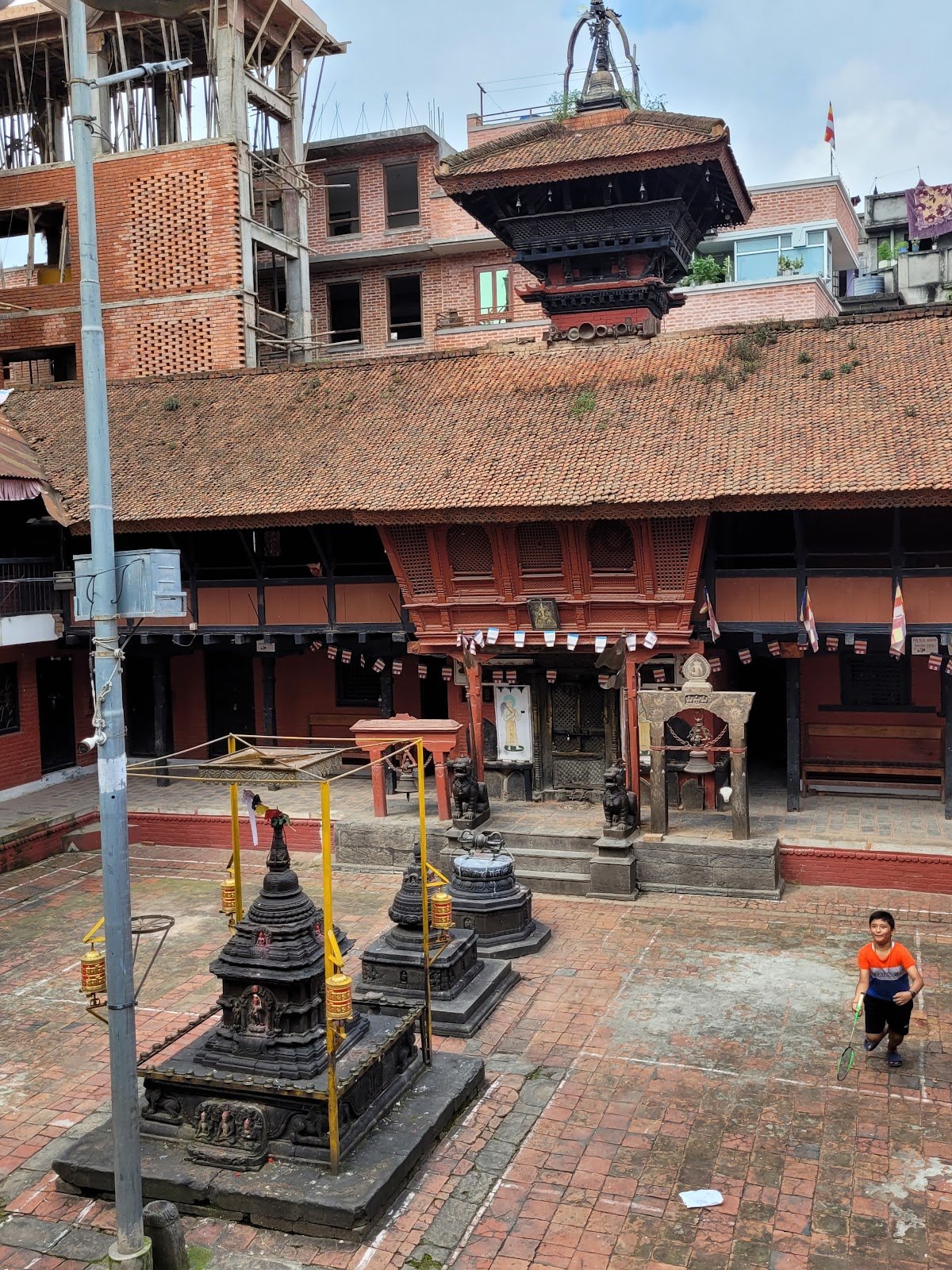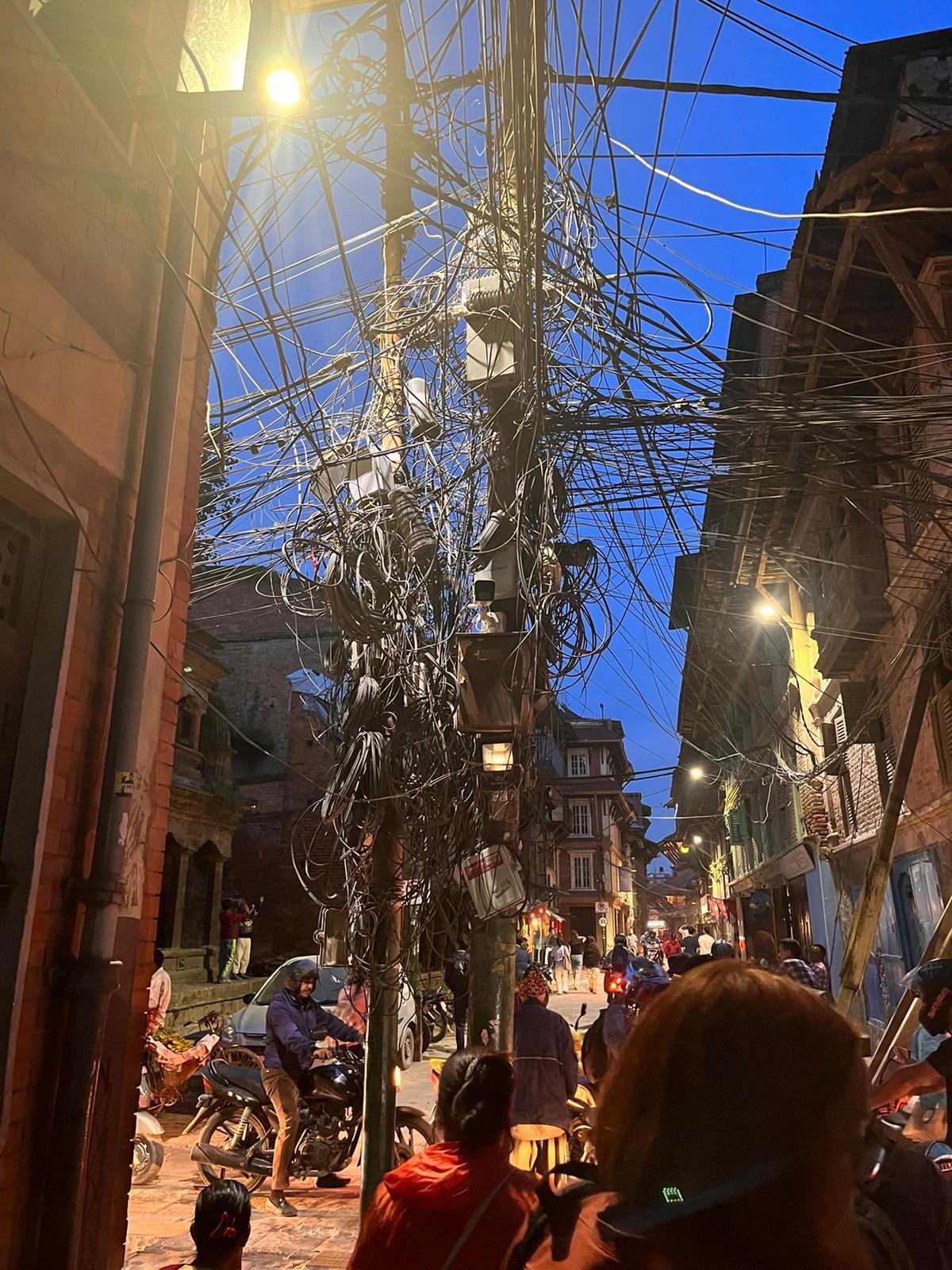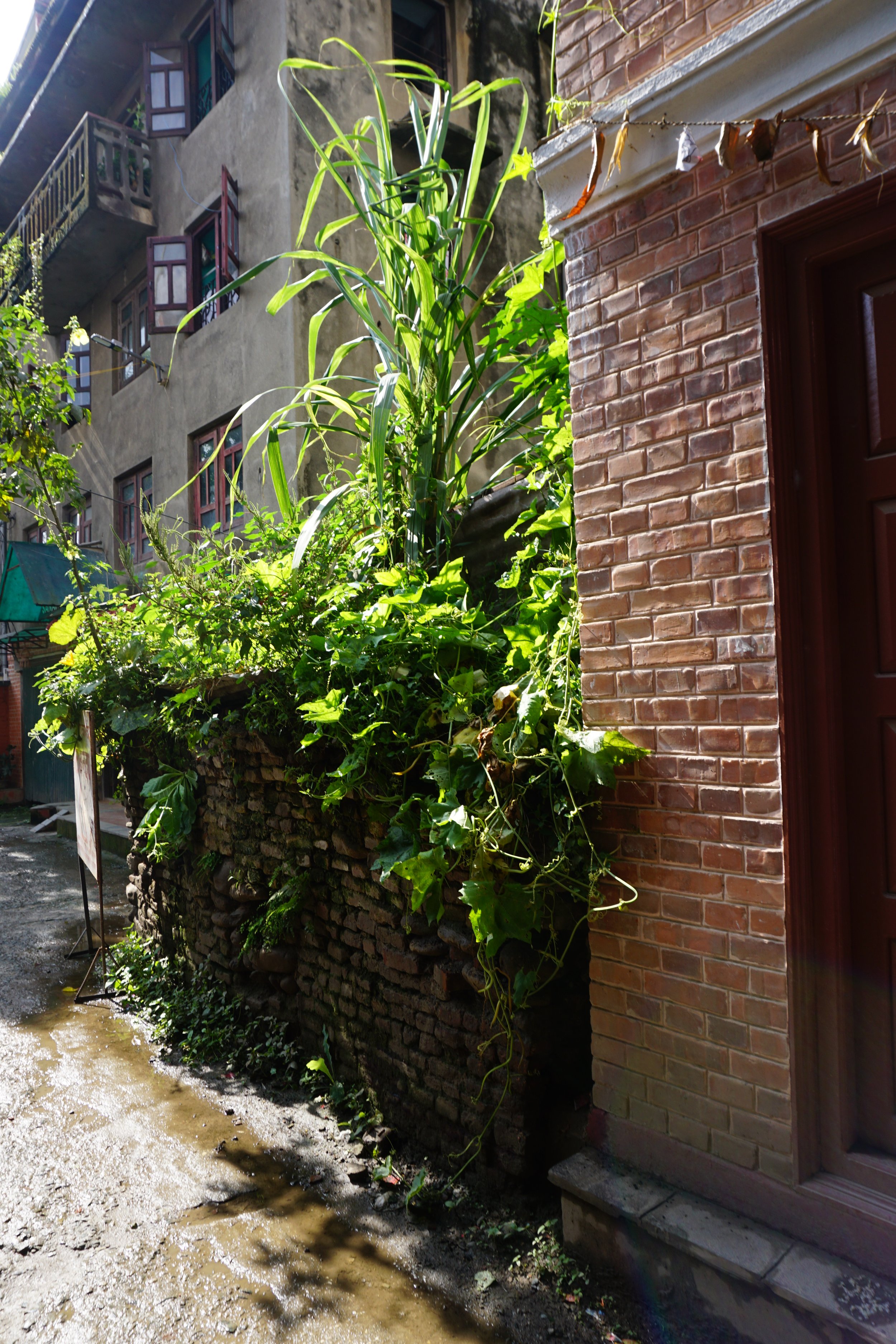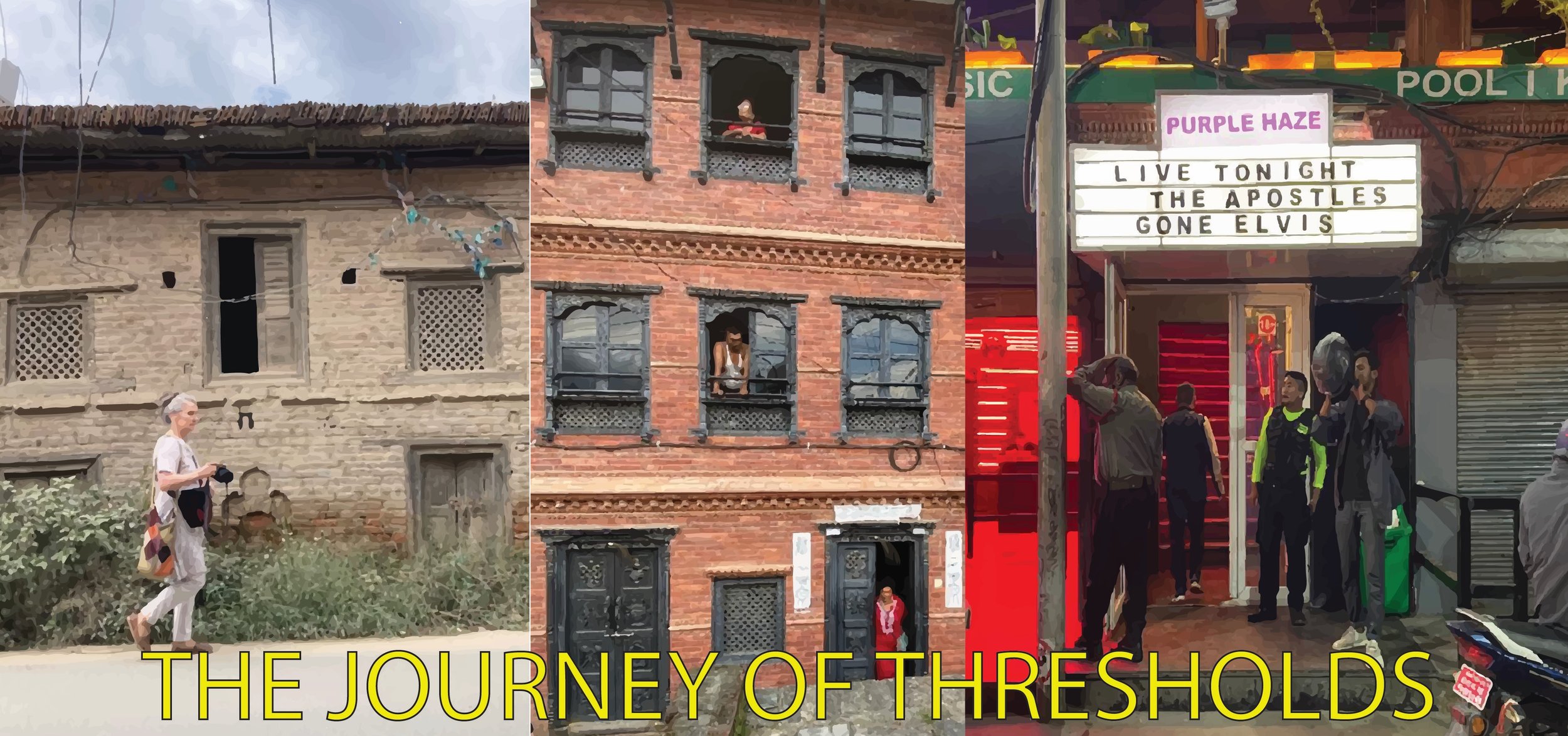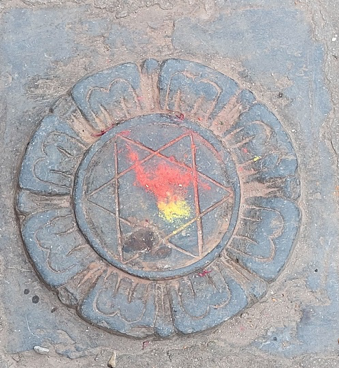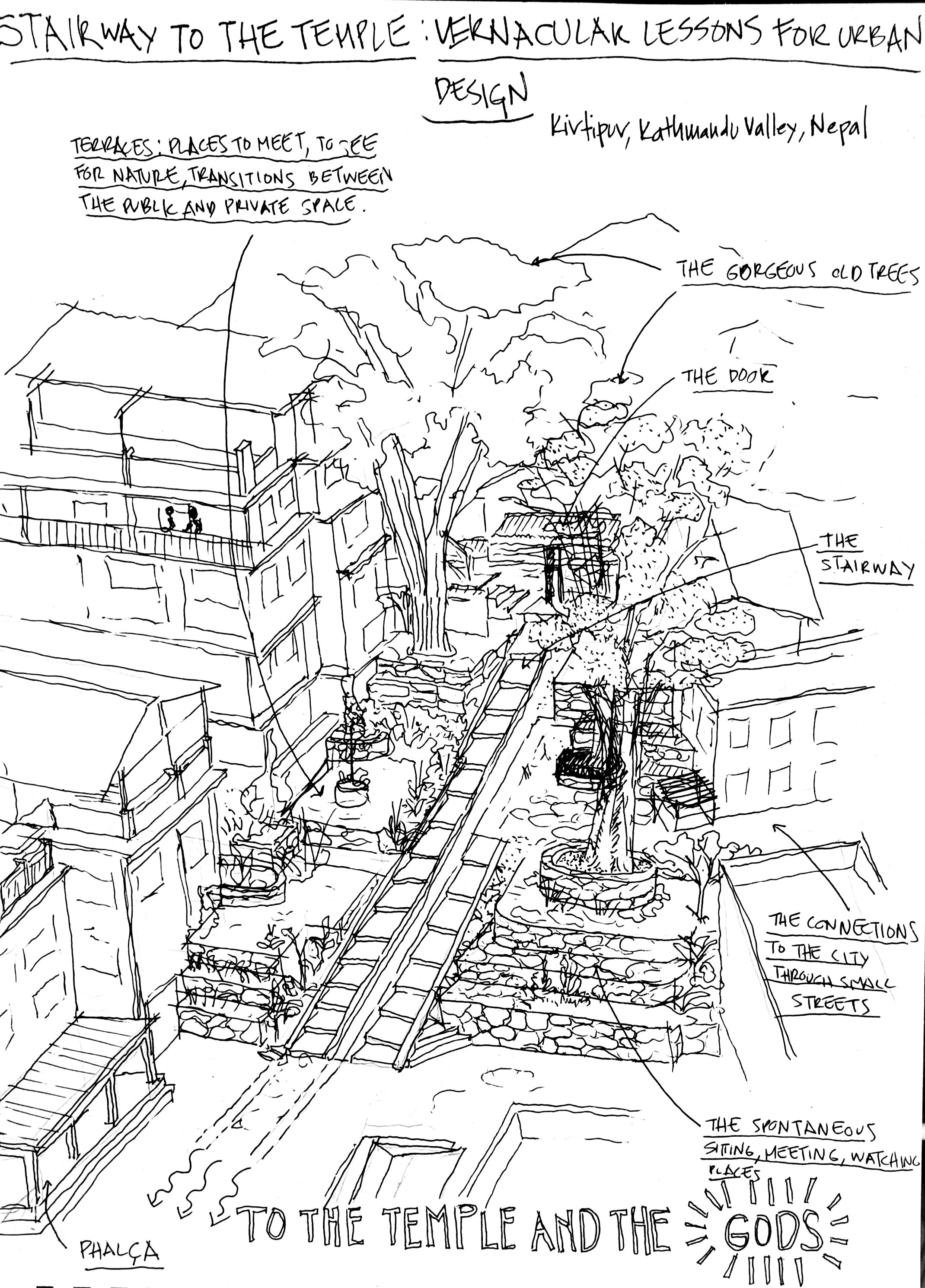Mohd Asif Ansari is an architect and currently pursuing his master’s (M Arch.) in Urban Design at the School of Planning and Architecture (SPA) in New Delhi.
A well in Patan with a pump and spout and potted plants on top. Photo: Shamik Chatterjee.
Groundwater has become a major natural resource contributing to the water supply system in the Patan (Lalitpur) district of Nepal. The people of Patan have been using groundwater for ages through dug wells and stone spouts. Usually, groundwater is replenished during the monsoon season, a period of heavy rainfall. Due to urbanization, surface infiltration of water has been vastly reduced, while consumption of groundwater is ever-rising. Hence, the water table has gone down over the years. Since many people rely on groundwater as there is no drinking water supply or pipeline system in the central areas, the traditional water supply system through dug wells and stone spouts needs to be preserved.
When I was roaming around the streets of Patan, I saw the wells that are present at the major cross-junctions of the streets, along with a temple. The junctions act as a public square for community gatherings. The wells are designed at major junctions of streets, along with temples, and play an important role by serving the community with fresh groundwater. We can revitalize the old wells system and use them to recharge the groundwater table.
A well at a prominent cross-junction in central Patan with a temple behind it. Photo: Mohd Asif Ansari.
References:
“Feasibility of recharging aquifer through rainwater in Patan, Central Nepal,” By Hiterndra Raj Joshi and Suresh Das Shrestha; Bulletin of the Department of Geology, Tribhuvan University, Kirtipur, Kathmandu, Nepal. DOI: 10.3126/bdg.v11i0.1541




